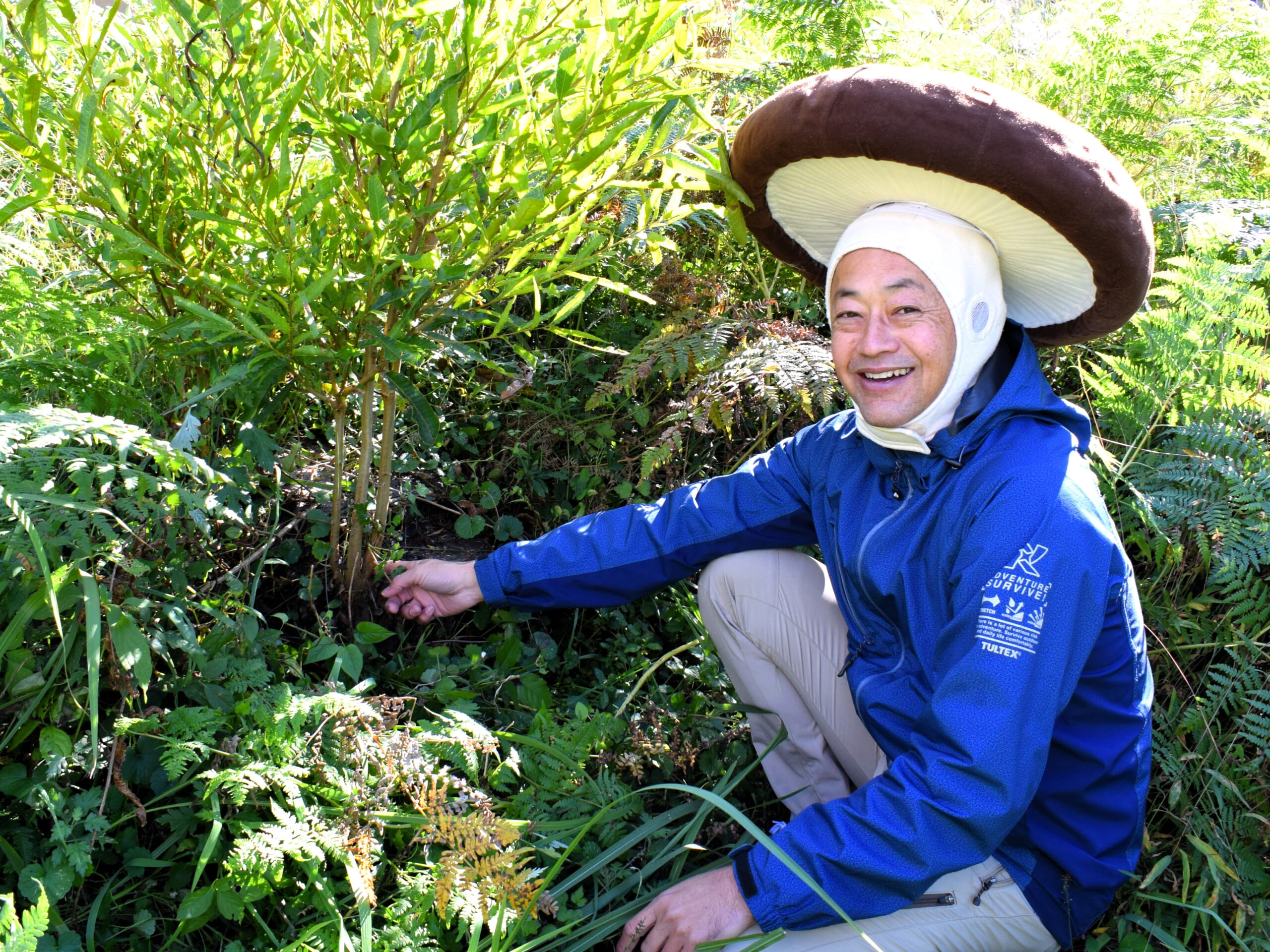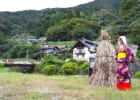

Takachiho Slow Life Vol 3: Protecting the forest and preserving history, Shiitake mushroom cultivation
- 0 お気に入り
- 980 view
- お気に入り登録

Takachiho is a town surrounded by mountains and rich in nature.
The lifestyle lived by the people who live with the richness of nature, is the very essence of a slow life.
They live in harmony with nature and in a carefully leisured pace. This month’s article introduces the cultivation of shiitake mushrooms, a way of life in Takachiho.
A visit to the guardians of log shiitake mushrooms in Takachiho

Sugimoto, a shiitake mushroom wholesaler located in Mitai, Takachiho, started as a shiitake mushroom brokerage in Takachiho about 70 years ago. The company’s sales channels overseas have exploded, with wealthy people in the US and the Middle East ordering Sugimoto’s shiitake powder. We meet to the company’s third president, Kazuhide Sugimoto (recently given the title ‘shiitake prince’), who travels the world for business meetings.
The cultivation of shiitake mushrooms is one of the oldest industries in Takachiho. The cultivation of shiitake mushrooms, which been done by locals for living, actually connected to nature protection.
The raw wood for growing shiitake mushrooms is made from sawtooth oak trees (Kunugi in Japanese), which are a broad-leaved tree. The broadleaf forests act as a green dam and retain water. By cutting down trees to produce shiitake mushrooms, the forest is actually rejuvenated.
Such sustainable practices naturally been have continued in the cultivation of log shiitake mushrooms,” says Sugimoto.
Protecting our forests and preserving our history, with log-grown shiitake mushrooms

Shiitake mushroom cultivation in Takachiho is said to have continued since the Edo period. Old documents record that shiitake mushrooms were traded as early as 1735.
Also charcoal production has been active in Takachiho since ancient times. It is said that the shiitake mushrooms may have started growing on their own when the trees used to make charcoal were left to grow.

Shiitake mushrooms are not immediately harvested from cut down trees. After the shiitake mushroom fungus has been injected into the tree, it takes about two years until the shiitake mushrooms finally start to grow.

When the small shiitake mushrooms starts pop up, it takes about three days for them to take on the shape that we recognize as shiitake and can then be harvested.
“Delicious shiitake mushrooms are made possible thanks to the natural attributes unique to Takachiho. One is the difference in temperature between day and night. Another is the fog that forms the sea of clouds. The fog provides the shiitake mushrooms with just the right amount of moisture,” says Sugimoto.

Shiitake mushrooms grow from logs for about 5-6 years. When the logs have served their purpose, they decay and naturally turn to soil.

“Look here”, Sugimoto says wading through the bushes to show us a tree stump.

“Cutting down trees is often thought of as destroying the forest, but in fact it is quite the opposite. Cutting down trees allows light to reach the ground. This allows plants and flowers to flourish.
And trees don’t die just because they are cut down, they are alive and new sprouts grow from the stumps”.
This is why the cultivation of shiitake mushrooms is also linked to protecting the forest.
Cultivate log shiitake mushrooms through a forestry and fortune cooperation

The biggest problem faced by industries in mountainous areas is the lack of driving forces.
We are also working on a forestry and fortune cooperation, both in terms of job creation and shiitake cultivation.

They work with welfare workshops and carry out tasks such as growing and drying shiitake mushrooms.

The collected log shiitake mushrooms are spread out and checked before being placed in the dryer.
After carefully checking each one, they are then dried with far-infrared rays to become the product ‘dried shiitake mushrooms’.

At the workshop, we remove dust and dirt from the log shiitake mushrooms one by one with a brush, and check for insects. This meticulous work insures that they are a tasty and safe product.

The shiitake mushroom cultivation areas are located in the mountains, and the terrain itself is a hurdle for people with physical limitations.
A new initiative was therefore launched to find a flat area where log shiitake mushrooms could be cultivated, and to cultivate them in the schoolyard of a former elementary school.

“It is important,” says Sugimoto, “to plan together with the users and the personnel of the facilities about the initiatives in order to keep going by going forward.
Towards a sustainable society

“What I can do for a sustainable society is to keep buying shiitake mushrooms,” says Sugimoto.
Sugimoto purchases shiitake mushrooms directly from shiitake producers in Takachiho, as well as neighbouring towns and villages area.
Currently, the company purchases from about 600 producers and buys all shiitake mushrooms brought in for cash on the spot.
“Each producer cultivates as much as they can and we buy it back from them. It’s a simple thing, but by continuing to repeat it, the cultivation of shiitake mushrooms will continue. That’s why it’s my belief that we have to buy all the shiitake mushrooms they bring us,” says Sugimoto.

The shiitake mushrooms purchased from producers comes in different sizes and shapes.

After temporary sorting, far-infrared drying and secondary sorting, the products are finally packed in bags.
In addition to dried shiitake mushrooms, there is also shiitake mushroom powder and Japanese curry using shiitake mushrooms available.
On purchase a recipe booklet is included, and cooking instructions are also available on the Sugimoto website and SNS.
Conclusion
What did you think of the shiitake mushroom cultivation in Takachiho?
Dried shiitake mushrooms and shiitake mushroom powder can be purchased at Michi-no-Eki Takachiho and at Kihachi-no-Kura in the Gamadase Market. Recently, as Sugimoto’s products have been featured in the mass media, there are times when the products are in short supply, so please check in advance when making your purchase!
★Click here for directions to Michi-no-Eki Takachiho
★Click here for directions to Gamadase market Kihachi-no-Kura
The town of Takachiho has also adopted the hometown tax system, so we recommended you to search for “Takachiho” on sites such as Furusato Choice and Rakuten.
★Click here for Takachiho hometown tax system, Furusato Choice
★Click here for Takachiho hometown tax system, Rakuten
 関連の記事
関連の記事
 コンシェルジュからのおすすめ
コンシェルジュからのおすすめ
お客様のご要望に沿ったおすすめの観光情報・宿(ホテル 旅館)・レストラン・居酒屋・カフェ・ショップ等をコンシェルジュスタッフが厳選してご紹介しております。














